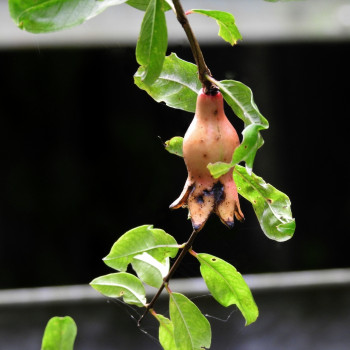Pomegranate

Scientific Name :
Punica granatum L.
Synonym(s) :
Punica nana L.
Local/Common name(s) :
Mathalanarakam, Pomegranate
Family :
Punicaceae
Habit :
Shrubs
Flowering/Fruiting Time :
March-August
Habitat :
Cultivated
Endemic :
No
Status (IUCN) :
Least concern (LC)
Distribution :
Central & West Asia, West Himalaya, widely cultivated in East Himalaya, South Europe and Asia
Nativity :
Exotic
Uses :
Medicine, Food
Description (Morphology) :
Tree or shrub, l.5-5 m tall. Branches terete, opposite, branchlets usually ending in spines. Leaves glabrous, lustrous, oblong-lanceolate to obovate or elliptic, subpetiolate, entire, apex sub-actue to obtuse. Flowers scarlet red or white, conspicuous, 3 cm or more in length. Calyx 20-35 mm long, indented slightly above the middle, reddish, somewhat succulent; lobes 5-7, 8 mm long, triangular. Petals and stamens inserted at the throat of the calyx. Petals broadly obovate, wrinkled, alternating with the sepal lobes. Filaments c. 7 mm long, multiseriate, persistent. Ovary subglobose; style thick, 1 cm long, reddish; stigma simple; slightly bilobed. Fruit globose, 2-8 cm in diameter, sometimes persistent, pale red to scarlet, or brownish, partitioned by thin leathery yellow septa; the rind thick and coriaceous. Seeds red or pink, 10 mm long, angular, testa thick, fleshy and juicy.



